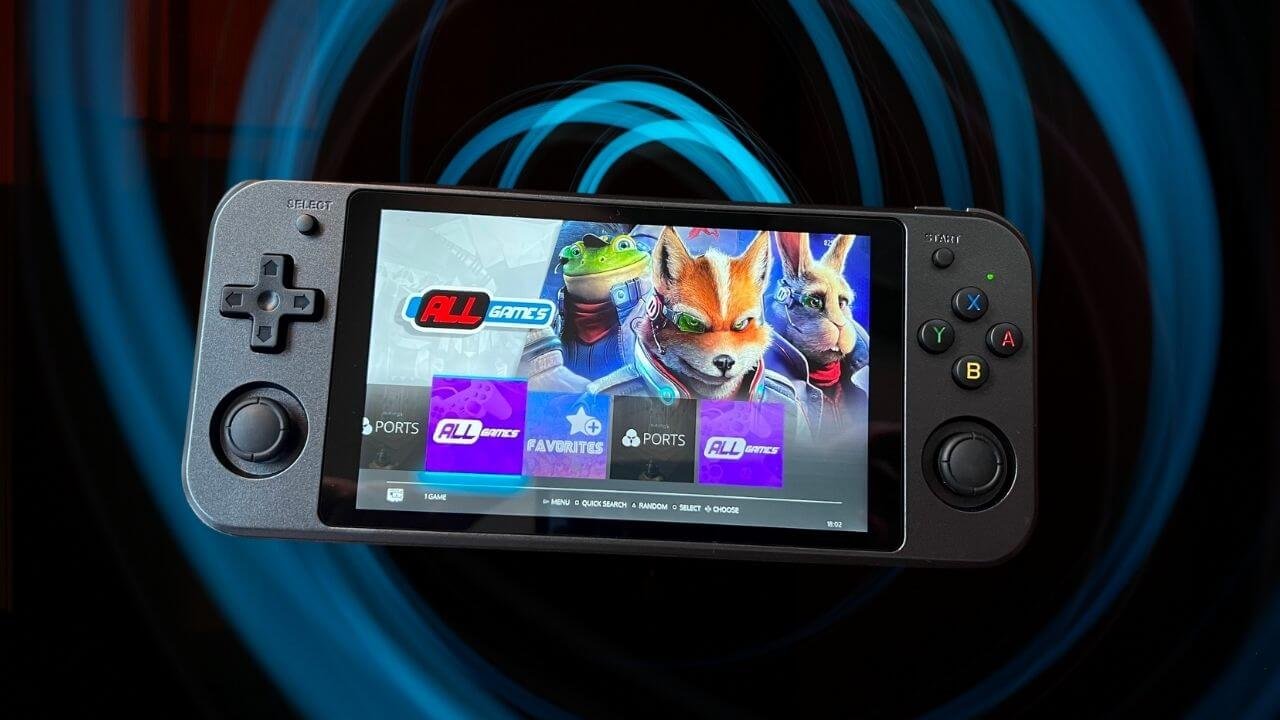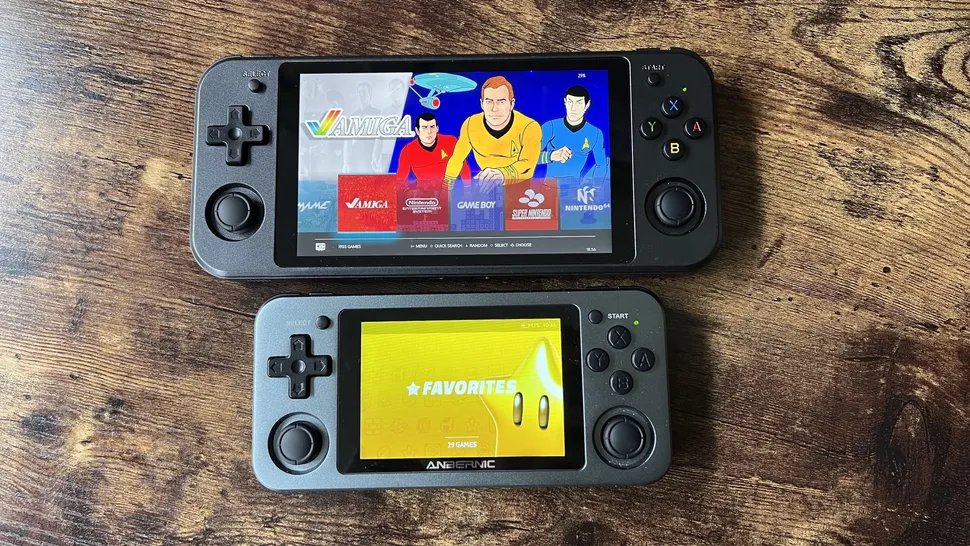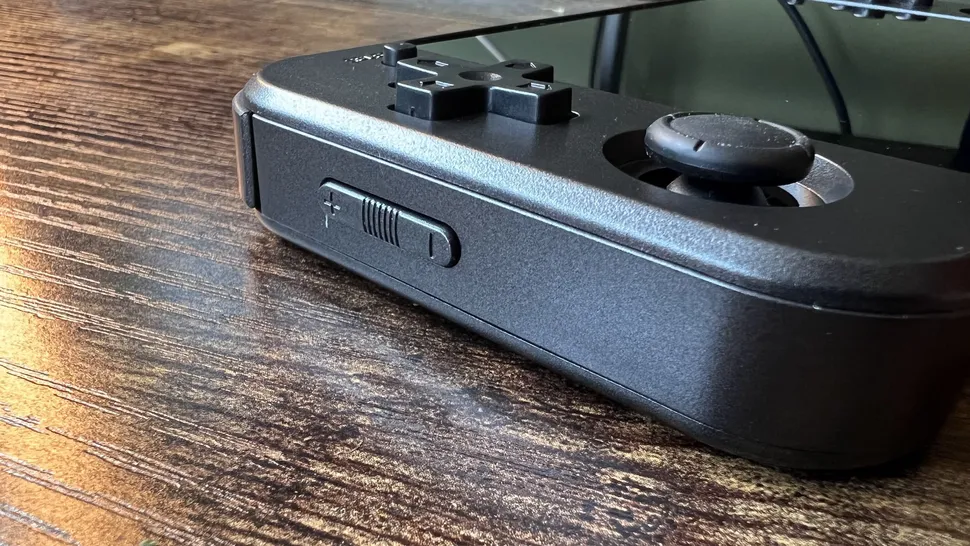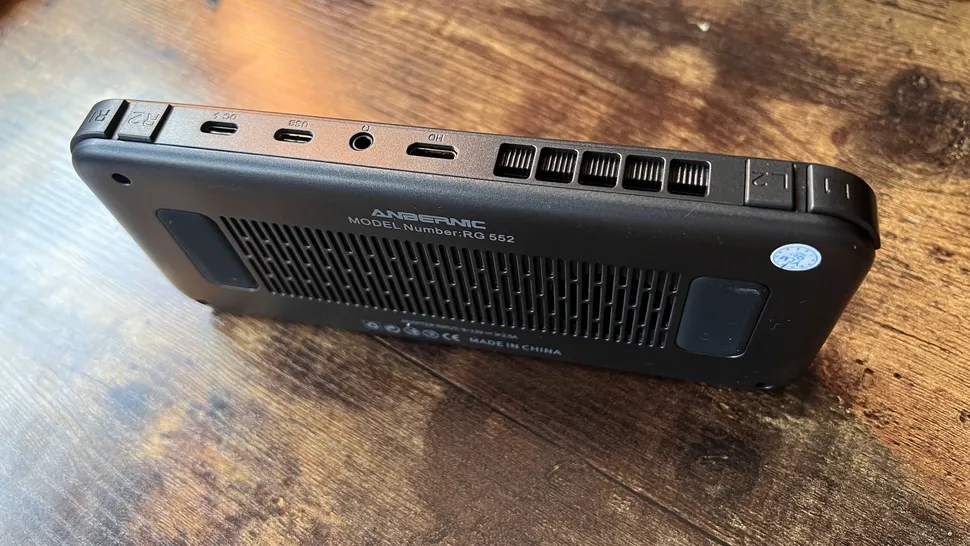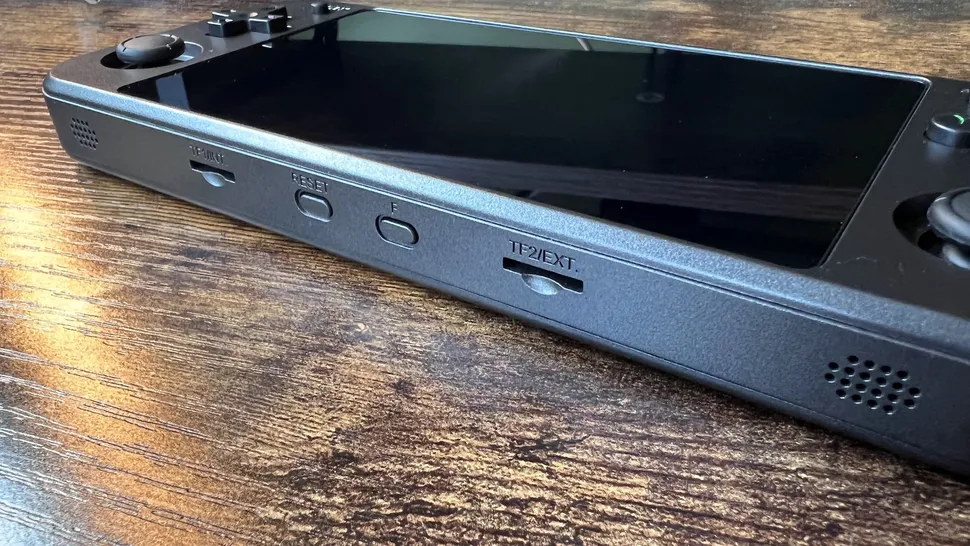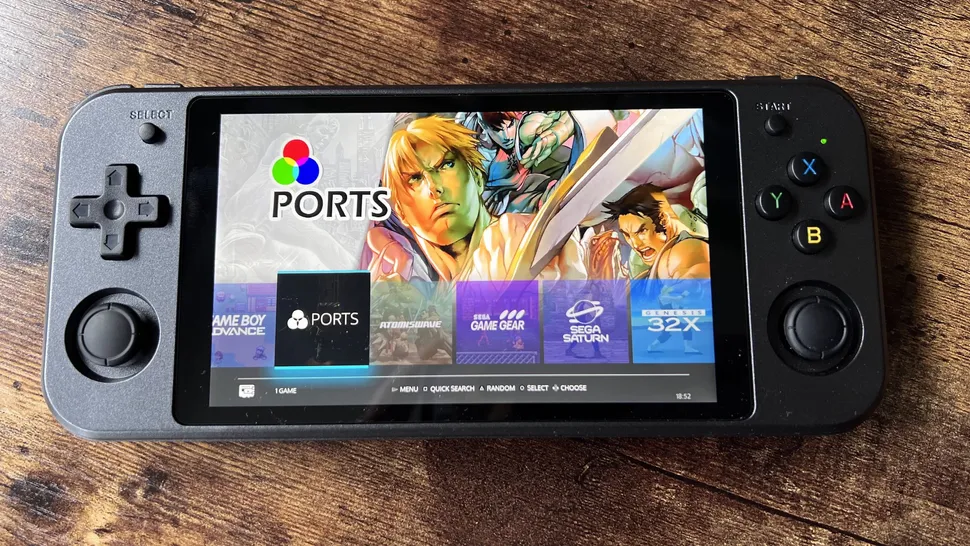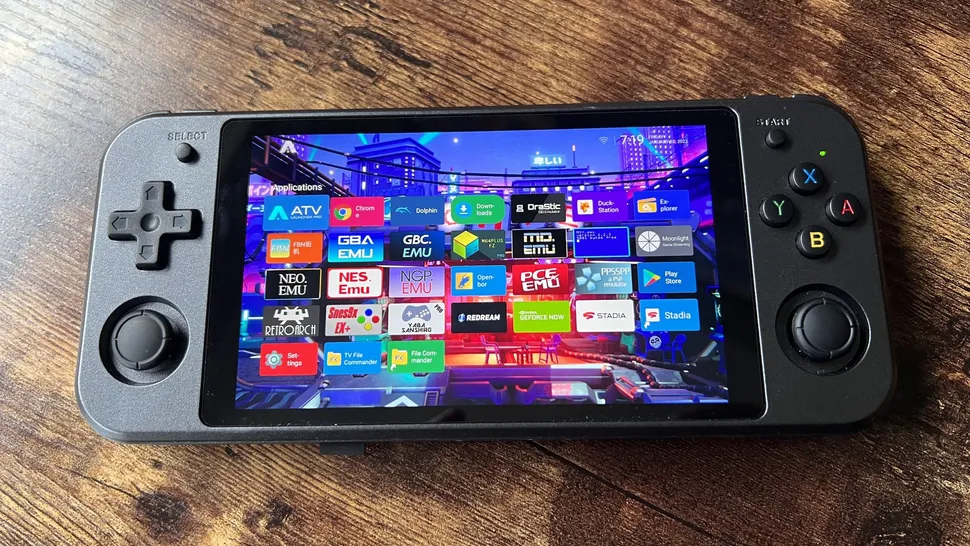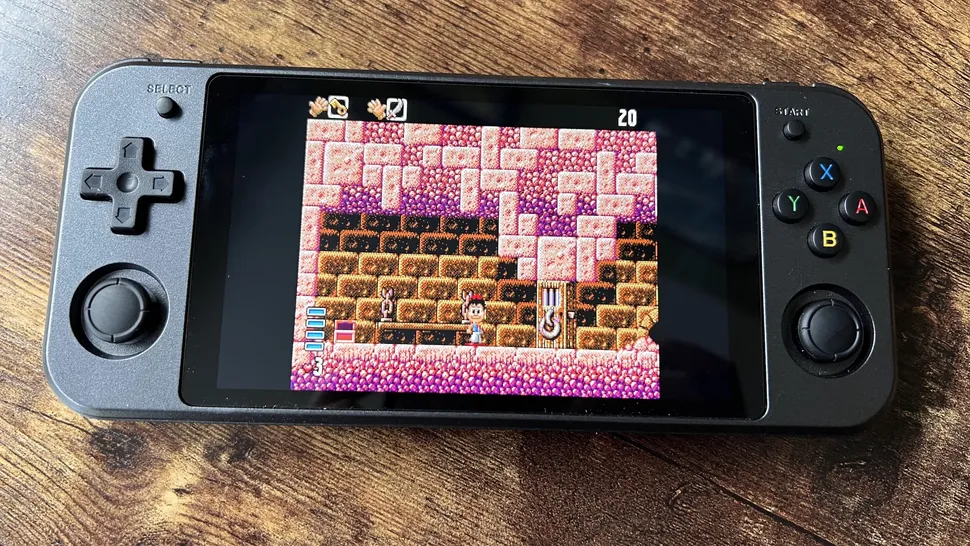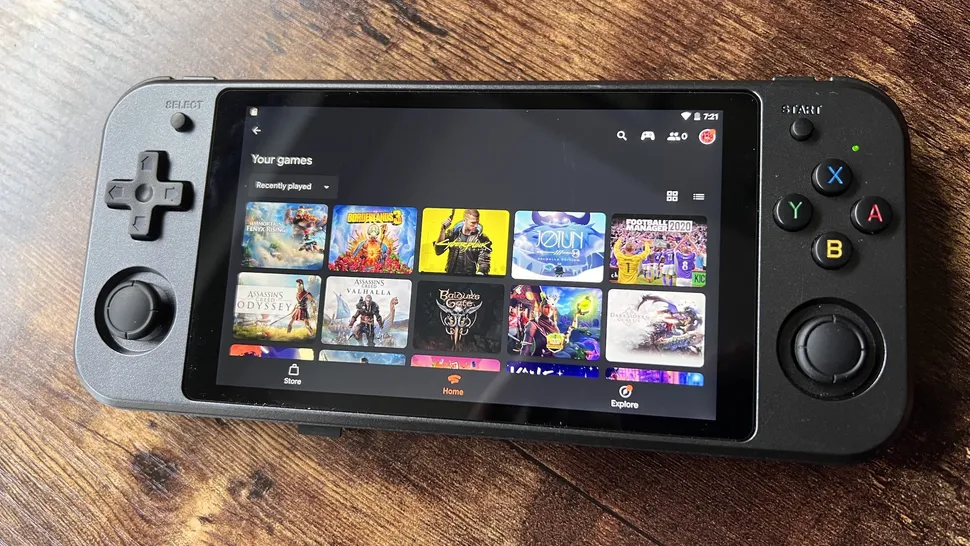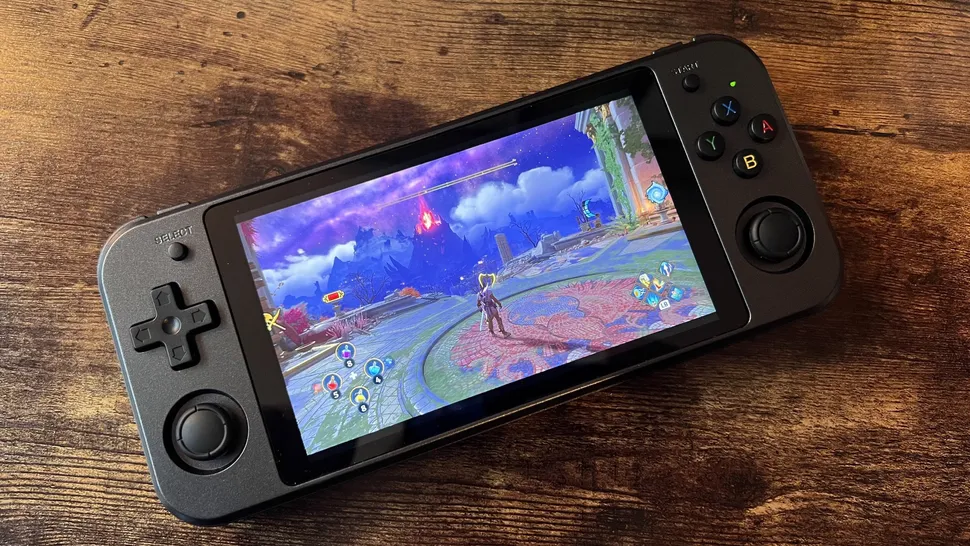You may not have heard of Anbernic, but the gaming hardware maker located in China has been quietly gathering an army of admirers owing to the great throwback handhelds it has been making for several years.
From the RG350 to the RG280V, and many more in between, it’s established a strong reputation for producing excellent, inexpensive Linux-based handhelds designed specifically for retro gaming, with build quality that exceeds expectations.
The Anbernic RG552 is the company’s most advanced and ambitious product to date — a high definition touchscreen portable that can dual-boot between a gaming-focused Linux OS and full-fledged Android. It’s a one-stop-shop for gamers of all ages and creeds, with more powerful internals than Anbernic has released previously and capable of simulating games spanning from the early noughties to decades earlier, as well as supporting contemporary game streaming systems.
It falls just short of perfection, owing mostly to the increased price it asks, which is higher than has come to be anticipated of gadgets of this type. However, owing to a passionate community of tinkerers, the RG552’s early days after introduction may represent only a fraction of its potential in the coming months.
Anbernic RG552 Review: Price and Availability
The Anbernic RG552 is currently available. Pricing varies depending on where you search to buy the gadget — buy straight from Anbernic through its website and expect to spend around $227 / £170 before import taxes are applied – plus there is a considerable delivery wait from China. However, if you buy straight from a reseller like Croix, you’ll spend £209.95 (about $280) and get next-day delivery.
In any case, that’s a lot more expensive than Anbernic goods used to be. In comparison to previous versions, the price is justified — there’s a larger, higher-resolution screen available, as well as more powerful internals. But, at a comparable price range, similarly strong, if not more powerful, competition like the Ayn Odin is just around the way. For the time being, the Anbernic RG552 is still reasonably priced, but that may change in a few months.
Anbernic RG552 Review: Design
The Anbernic RG552 is one of the market’s larger dedicated retro handhelds. It is similar in size to a Nintendo Switch Lite and has a 5.36-inch touchscreen with an HD resolution of 1920 x 1152, which accounts for the bigger size. This results in a slightly odd 5.3 aspect ratio, but it’s one that actually benefits the majority of the retro content you’ll be playing on the device, as you’ll be able to use pixel-perfect integer scaling to increase the resolution of even the oldest systems while minimizing the black borders that surround games not designed for high resolutions.
It’s also beautiful to look at. Though the touchscreen’s response is somewhat dubious, the colours are vivid, the black levels are deep and inky, and the viewing angles are broader than you’ll need for regular solo gaming. Image quality for vintage games on the Anbernic RG552 is outstanding when scaled up utilizing correct integer pixel scaling settings.
If you’ve used older Anbernic devices such as the RG351P or RG351M, the RG552 will appear extremely similar. There are symmetrical, clickable dual analogue sticks (similar to those found on a Nintendo Switch), a fantastic, responsive D-Pad, and X, Y, A, and B buttons with a delightful, spongy sensation. The L1, L2, R1, and R2 buttons are arranged on the top, with the pairs contiguous rather than stacked. As a result, the L2 and R2 buttons are rather tiny and might be difficult to reach at times. Over the D-Pad is a chosen button, and above the X, Y, A, and B buttons is a Start button.
The volume rocker button is on the left (with a little unsettling rattling — the one weak point in an otherwise strong design), and the power button is on the right. On the bottom is stereo speaker ports, two SD card slots, a reset button, and a ‘Function’ button, which may be used in conjunction with the face buttons to map in-game and in-emulator hotkeys. These final two buttons can be easily confused without looking, so be cautious not to accidentally restart your game at a critical stage when looking for the Function button – anticipate custom firmware to modify this before shortly. When you go to the Android side, the Function button also serves as a physical ‘Home’ button.
The top edge includes the 3.5mm headphone socket, two USB-C ports (one for charging, one for plugging in external equipment like gamepads), and a small HDMI port for mirroring the action on a large-screen TV. Finger grip pads are also located on the rear, which is useful for keeping the handheld from slipping about on a tabletop.
The audio output is powerful and clear, with the speaker grill strategically placed to avoid the muffling effects of your fingers. There’s also rumbling — two motors on either side of the screen, amazingly – but don’t expect PS5-style DualSense levels of delicacy. It’s more equivalent to the vibration of a phone.
The RG552’s overall size means it’s not quite pocketable. With dimensions of 20 x 8.5 x 2cm and a weight of around 350g, it’ll require a secure place in your bag when you’re out and about. The increased size has both advantages and disadvantages. The screen is huge and beautiful to look at, making it ideal for systems with a larger aspect ratio, such as the GBA or PSP. However, the increased screen height makes it difficult to hit the side-by-side shoulder and trigger buttons while still utilizing the sticks and face buttons. Stacked shoulder buttons appear to be a requirement for devices of this size, and although it’s natural that Anbernic would stick with its prior design language, a change to match the bigger size is necessary.
Anbernic has finally improved its RK3326 system on a chipset that has been the backbone of its gadgets for a long time. Anbernic has instead chosen a RockChip.
This time, the RK3399 chip is used, which is a six-core CPU with two cores clocked at 1.8GHz and four at 1.4GHz, as well as 4GB of RAM. The GPU is a Mali-T860 MP4 with a clock speed of 600MHz. While this may appear to be a simple setup in contrast to a typical Android smartphone, it is a strong setup for a specialized handheld device. However, as previously stated, the Ayn Odin, with its SnapDragon 845 8-core / 2.4GHz CPU, will outperform this arrangement.
The Anbernic RG552 is one of the first handhelds to have an active heatsink in the shape of a fan in order to push this chipset to its maximum. Vents on the back of the handheld and the top of the device pull in and push out air to keep internal components cool, kicking in depending on how demanding the current content you’re attempting to run is. The fan noise is low and manageable, but you will feel the intake of air on your fingertips on the back.
The Android side of things comes with 64GB of built-in storage, while the Linux side comes with a 16GB microSD card. A second SD card slot is also available for storing your games and material, but you must supply your own card.
Two onboard batteries total 6400mAh and are included with a USB-C fast charger, which is a welcome bonus. The battery life in use will vary based on what you’re playing and whatever operating system you’re using. However, expect 3-5 hours of playtime — on the lower end of the range for 3D games.
The absence of Bluetooth here is bothersome since it limits the use of wireless headphones or additional wireless controllers, which is unfortunate considering that the micro HDMI output to a TV is excellent and otherwise sufficient for utilizing the RG552 as a console-like experience. Similarly, the presence of only the 2.4GHz Wi-Fi band may result in inconsistent streaming performance depending on your home network configuration.
Anbernic RG552 Review: Features and Software
The RG552 has the somewhat unusual option of booting into one of two operating systems: the Linux-based, gaming-focused Batocera (which integrates emulators, game art, and metadata into a wonderful jukebox-like retro gaming front end) and Android 7.1, which is accessed by removing the Linux SD card when booting the console up and runs with a pre-installed ATV Launcher that introduces a tile-like interface reminiscent of Android TV. Following some early software difficulties, the Anbernic RG552 now arrives with updated firmware that addresses some of the most common complaints from early users, particularly audio slowness on the Batocera side and a lack of Google Play Store access on the Android side, both of which are now rectified.
Depending on your gaming habits, you’ll be switching back and forth between the two operating systems on a frequent basis. Batocera is a fantastic gaming interface with a built-in metadata scraper that pulls in videos, artwork, and descriptions for all your games, as well as combining the many RetroArch emulator cores for multiple platforms into a single user-friendly system. Put a few games in the appropriate SD card directories and you’re good to go, but delve a bit further and the OS becomes quite configurable, with multiple themes, layouts, and in-game presentation choices to experiment with.
The Android side is a little less appealing – after all, it’s simply an app launcher – but you can always install a comparable front end for artwork from the Play Store, such as the fantastic Dig or Reset Collection applications. Where it really shines is in emulator programs for newer 3D systems. Simply said, Android development for 3D systems (PS1 and higher) outpaces what’s occurring on the Linux side. If you wish to play a Dreamcast game, for example, you should use Android’s ReDream emulator.
It’s worth mentioning, though, that we’re disappointed to see certain paid-for Android emulators appear on the device without requiring a license. We’re not confident that the developers have been reimbursed for their efforts, so if you haven’t already, we recommend purchasing them using your own Google account.
For the uninitiated, it’s worth noting that a big part of the fascination of old gear like this is seeing what the developer community accomplishes with modified firmware for the devices. For better or worse, Anbernic’s contribution here serves as a framework for others to riff on. Even immediately after the device’s introduction, modified firmware choices for unlocking additional capabilities are beginning to surface online. And, while we can’t evaluate something that doesn’t come with the device, we’re optimistic that a variety of OS alternatives for the RG552 will be available soon, along with a slew of new features. Just look at the community that has sprung up around the RG351 devices to see what’s possible in this space.
Anbernic RG552 Review: Performance
If you’ve used an Anbernic device previously, you’ll be delighted to know that the RG552 offers a major performance gain, thanks to both its Linux OS and the additional possibilities made available by its Android side.
You’re in for a treat if you want to play any game from the pre-8-bit, 8-bit, 16-bit, 32-bit, or 64-bit periods (essentially anything from the Atari to the Nintendo 64, plus any 2D arcade games and a scattering of 3D ones). Whatever title we threw at the Anbernic RG552 during that window, it handled it with ease, without dropping a frame and, in the case of most 2D and some 3D games, with the resolution adjusted by a multiplication factor. These games have rarely looked this wonderful, thanks to a mix of software screen filters and high-quality output that makes them appear as you remember them, through rose-coloured glasses, rather than how they truly were.
However, it becomes more difficult after that point. Dreamcast games run well at their original resolution, and many are pleasant when upscaled to 2x resolution. However, upgrading PSP will be difficult, and any system or Android game that demands touchscreen input would be limited by a slightly finicky touchscreen. And, while other handhelds are beginning to dig into Gamecube and PS2 emulation, the RG552 is utterly out of reach. What is supported is handled beautifully, whether it’s upscaling the occasional Dreamcast game or tricking 4:3 PlayStation titles into running at high resolution in a 16:9 ratio without stretching and instead of expanding the confines of the play space, it’s a vintage gamer – and tinkerer’s – utopia.
That’s before we even get into the streaming aspect of things. On the RG552, you can enjoy Stadia streaming or PC game streaming across a home network with Moonlight if your internet connection is fast enough. Having the aforementioned throwback capabilities with these forward-thinking streaming platforms is fantastic, albeit hampered slightly by the absence of 5GHz Wi-Fi alternatives.
Final Thought
The Anberinc RG552 will be a revelation if you’ve never played with a vintage handheld before. It’s a customized time machine for accessing the best titles from four decades of gaming, with a build quality to rival the Nintendo Switch.
It takes some tinkering and setup prowess to get it operating properly, so it’s best suited for folks who appreciate both a project and a good time. However, once configured to your preference, it shows itself to be a near-complete doorway to all kinds of gaming experiences, ranging from 8-bit oldies to current streaming delights.
However, its price to performance ratio is somewhat wrong – with beefier internal components, we’d expect it to run more complex emulated software than it is capable of for the price, and its absence of stacked shoulder buttons may make playing games that demand a lot of shoulder button work unpleasant.
It’s also releasing at the same time as a new wave of retro handhelds, like the Ayn Odin and Retroid Pocket 2 Plus, that promise more software support and greater emulation capabilities. Each has advantages and disadvantages, but as of now, the Anbernic RG552 is about as excellent as retro gaming on the move goes — it’ll be interesting to see what the highly active dev community does to improve its capabilities even further.
